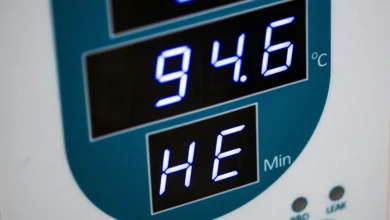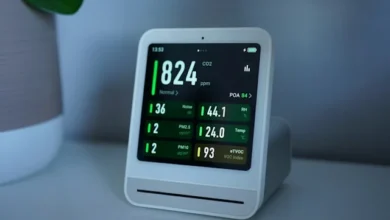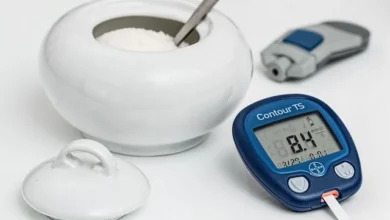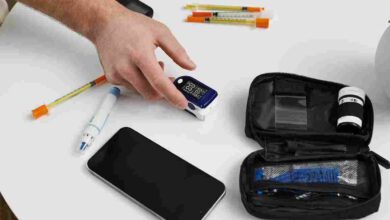5 Easy Ways to Validate BP Monitor at Home
Introduction & Understanding the Importance of Validating a BP Monitor
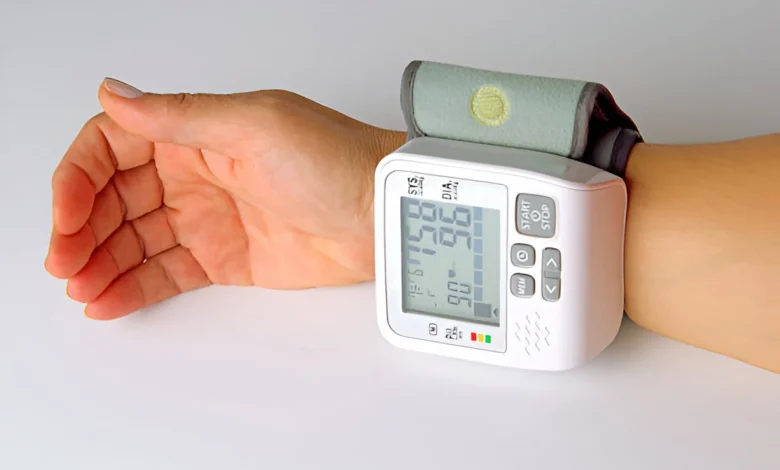
How To Validate BP Monitor At Home
Validating your blood pressure monitor at home is one of the most critical steps for ensuring that your readings are both accurate and reliable. Since blood pressure directly affects health decisions related to hypertension, heart disease, and medication adjustments, a small error in readings can cause big consequences. Many people rely on devices like Omron, Beurer, or Microlife, but they often don’t know whether their device is giving precise results. This guide will explain, step by step, how to validate a BP monitor at home while covering calibration, accuracy, and reliability methods, so you can confidently monitor your health without frequent clinic visits.
Why Validation of a Blood Pressure Monitor Is So Important
Validation isn’t just about double-checking numbers—it’s about protecting your health. A non-validated or inaccurate BP monitor could lead to false hypertension diagnosis, wrong medication doses, or overlooked risks. Medical societies like the AHA (American Heart Association), ESH (European Society of Hypertension), and BHS (British Hypertension Society) recommend using validated BP monitors only. That’s why learning how to validate a blood pressure machine at home is so important for self-monitoring patients.
The Difference Between Validated and Non-Validated BP Monitors
A validated device has passed international accuracy protocols, while a non-validated one may only give approximate results. Understanding this difference helps you choose reliable devices and perform at-home checks to confirm accuracy.
How to Use a BP Monitor at Home Correctly Before Validation
Before checking your device’s accuracy, it’s important to use it the right way. Incorrect usage can cause errors that may appear as “inaccuracy” when the monitor is actually fine.
Preparing for an Accurate Blood Pressure Reading
- Sit quietly for 5 minutes before measuring.
- Place your feet flat on the floor, back supported, and arm at heart level.
- Avoid caffeine, smoking, or exercise 30 minutes before testing.
- Always use the right cuff size, as cuff fit directly impacts readings.
Step-by-Step Process to Measure BP at Home
- Wrap the cuff snugly around your upper arm.
- Ensure the tubing runs along the artery inside your arm.
- Start the monitor and remain still during measurement.
- Record at least two readings (1–2 minutes apart) for accuracy.
First Method – Comparing Home Readings with Manual Method
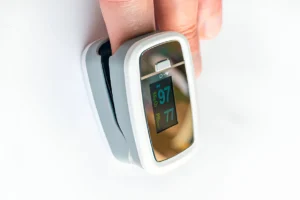
One of the most reliable ways to validate a BP monitor at home is to compare it against a manual method using a stethoscope and sphygmomanometer.
Can I Use a Stethoscope to Validate My BP Machine at Home.?
Yes, if you’re trained or have guidance from a healthcare professional, you can use a stethoscope to check whether your monitor’s readings match manual values.
Accuracy Check Process
- Take a manual reading with a sphygmomanometer.
- Immediately use your digital BP monitor on the same arm.
- Compare results – a difference of less than 5 mmHg is acceptable.
Validating BP Monitors Without a Doctor – Is It Possible.?
Many people ask: “Can I validate a BP machine at home without a doctor?” The answer is yes, but with some limitations. You can compare your device against a validated reference device or against your doctor’s readings.
Home Method to Check BP Monitor Accuracy
- Take simultaneous readings using your digital monitor and another validated machine.
- Repeat multiple times and note consistency.
- If differences are consistently above ±10 mmHg, your device likely needs calibration.
Blood Pressure Monitor Accuracy – Key Factors That Affect It
Even the best monitors can show inaccurate readings if certain conditions are ignored.
Cuff Size Impact on BP Accuracy
Using the wrong cuff size can make readings too high or too low. For example, a cuff that is too small often overestimates blood pressure, while a large cuff underestimates it.
Arm vs Wrist BP Monitors – Which Is More Accurate.?
Most experts recommend upper arm monitors because they follow medical standards, while wrist devices are often less reliable unless used exactly at heart level.
How to Calibrate a BP Monitor at Home
Calibration is the process of checking whether your BP monitor consistently gives readings close to clinical standards. Unlike simply comparing once, calibration involves multiple repeated checks over time.
Step-by-Step Calibration Method at Home
- Baseline Reading – Use a manual sphygmomanometer (or validated machine).
- Side-by-Side Testing – Place your BP monitor on one arm, and the reference device on the other arm.
- Repeat 3–5 Times – Note differences for each reading.
- Acceptable Range – A difference of ±5 mmHg is ideal, up to ±10 mmHg is tolerable.
- If Outside Range – Device likely needs professional calibration or replacement.
Advanced Validation Method – “Simultaneous Arm Testing”
This method is recommended by the European Society of Hypertension (ESH) for home users.
How It Works
- Use your home BP monitor on your right arm.
- At the same time, a validated reference monitor (or manual reading) is taken on your left arm.
- Repeat 3 times and compare differences.
- If your device shows consistent errors (>10 mmHg), it is not accurate.
Can I Validate a BP Monitor Using a Doctor’s Reading.?
Yes, this is one of the simplest at-home calibration hacks.
Doctor-Assisted Validation Method
- Take your monitor with you to your next appointment.
- Ask your doctor or nurse to measure BP with their professional-grade monitor.
- Immediately take another reading with your device.
- Compare results: if the difference is more than 10 mmHg multiple times, your device should be recalibrated.
How do I know if my BP monitor is accurate at home?
Check accuracy by comparing your device against a manual sphygmomanometer or a clinically validated device. If readings differ by more than ±10 mmHg, your monitor may be inaccurate.
Can I calibrate my BP monitor myself.?
Yes, you can do basic calibration at home by comparing your device against a manual or validated monitor, but professional calibration is recommended if large differences are found.
How often should I validate my BP monitor.?
Experts recommend validating your device every 6–12 months, especially if you rely on it for managing hypertension.
Do wrist BP monitors need validation too.?
Yes. Wrist monitors are more sensitive to position errors, so validation is even more important compared to arm monitors.
- How to check accuracy of blood pressure monitor
- Home blood pressure machine validation
- How to calibrate Omron blood pressure monitor at home
- Best way to validate BP monitor without visiting hospital
- Can I trust digital BP monitors?
- How to validate a wrist blood pressure monitor at home
- Signs your blood pressure monitor is inaccurate
Common Issues Found During Validation
When validating at home, people often discover issues like:
Device-Related Issues
- Battery power running low
- Cuff tubing leaks or cracks
- Display errors
User-Related Issues
- Wrong cuff placement
- Measuring immediately after exercise
- Talking or moving during measurement
Pro Tips for More Reliable Home Validation
- Validate your device at the same time of day for consistent results.
- Always sit quietly for 5 minutes before testing.
- Keep a logbook of both device readings and manual checks.
- Replace batteries regularly for consistent performance.
Expert Tips to Ensure Accurate BP Monitor Validation at Home
1. Choose a Clinically Validated Monitor
Always buy a clinically validated BP monitor (check sites like STRIDE BP or dabl Educational Trust). This ensures your readings are based on proven accuracy standards.
2. Use the Correct Cuff Size
A cuff that’s too small or too large can cause false readings. For example, using a small cuff on a large arm can show higher readings than reality.
3. Validate Regularly
Don’t wait years. Validate your device every 6–12 months or sooner if your doctor advises.
4. Cross-Check in Different Settings
Test your monitor at home, at the clinic, and even after light activity to ensure accuracy across different conditions.
5. Replace Old or Faulty Devices
If your BP monitor is older than 5 years or shows consistent inaccuracy, it’s often better to replace it than recalibrate.
Direct Answers
Q: How do I validate a BP monitor at home.?
Compare your monitor’s readings with a manual sphygmomanometer or a doctor’s device. A difference of less than ±10 mmHg means your monitor is reliable.
Q: Can I calibrate my blood pressure monitor myself.?
Yes, you can do a basic calibration at home by side-by-side testing, but professional calibration or replacement is needed if the gap is more than 10 mmHg.
Q: How often should I check my BP monitor’s accuracy.?
Validate it at least once a year, or more often if you have hypertension or suspect inaccurate readings.
Q: Which is more accurate: wrist or arm BP monitors.?
Arm monitors are generally more accurate. Wrist monitors need extra care with positioning to avoid errors.
Why is my BP monitor showing different readings each time.?
Variations can occur due to movement, talking, stress, wrong cuff placement, or device error. Always test under the same conditions for reliable results.
- “how to validate a digital blood pressure monitor at home”
- “calibrate blood pressure machine without hospital visit”
- “check if Omron BP monitor is accurate”
- “AI health tips for blood pressure monitoring”
- “is my blood pressure monitor accurate”
- “when to replace a blood pressure monitor”
- “difference between home BP readings and doctor’s readings”
FAQs
Can I validate my BP monitor without a sphygmomanometer.?
Yes, you can validate by comparing your device with your doctor’s monitor during a visit.
Is it safe to rely only on a home BP monitor.?
Yes, if your device is validated and used correctly. But always confirm readings with your healthcare provider.
How long does a BP monitor last.?
Most digital BP monitors last 3–5 years, after which calibration or replacement may be required.
Can a smartphone app validate my BP monitor.?
No. Apps are not a substitute for clinical validation. They can track trends but not accuracy.
What should I do if my BP monitor is not accurate.?
Replace it or get it professionally calibrated. Inaccurate devices can lead to wrong treatment decisions.
Conclusion – Take Charge of Your Heart Health
Validating your BP monitor at home isn’t just a technical step—it’s a lifesaving habit. By using simple calibration methods, expert tips, and regular checks, you can trust that your readings truly reflect your health.
Remember:
- Compare with a validated or manual monitor.
- Ensure cuff size and placement are correct.
- Validate at least once a year.
- Replace faulty or outdated monitors.
By following these steps, you’ll not only get accurate blood pressure readings, but also gain peace of mind in managing your heart health.

